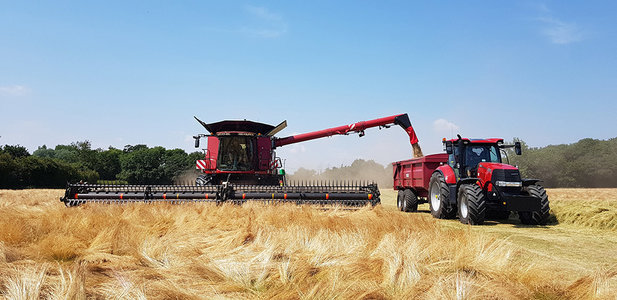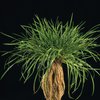Bar Tech May 2021
Welcome to the latest BarTech with thoughts, tops tips and advice from the UK Grass Experts.

Welcome to the latest BarTech with thoughts, tops tips and advice from the UK Grass Experts.
Silage 2021! Are you ready? Parts of the country are in full swing however in some, such as Northern Ireland, first cuts have been delayed due to cold weather affecting grass growth and prolonged rainfall pushing cutting dates back by at least 10 days. There is a temptation to revert from a three-cut system to taking two larger cuts of grass per year; there are pros and cons for both. Recent AFBI research proves that despite lower first cut yields a three-cut silage system is still more beneficial to make the very best high-quality silage. Find out more…
To cut or not to cut
There is a myth around taking early cuts of silage, implying that grass yields will not be sufficient to see the winter through. Average yields of grass across the year in a three-cut system will be approximately 10.9t/ha, only slightly lower when compared with 11.4t/ha in a two-cut system.
However, in recent trials conducted by AFBI, animals that were fed 2.5kg of concentrate per day on two-cut silage system required 10.1/ha of silage area. Animals fed the same amount of concentrates along with three-cut silage required only 1.2/ha extra. The animals fed on three-cut silage had higher intake and higher carcass gain. The return from animals was considerably higher when fed on three-cut silage compared with their counterparts on two-cut silage with the daily gain of the latter only equalled when concentrate intake was doubled to 5kgs/day.
The facts
Silage D value is considerably higher with silage swards cut three times a year, coming in at 71 D value compared with 63 D value for two cut silage.
Other benefits linked with taking three-cuts of quality silage are faster regrowth and less damage to the sward. Obviously, there are higher costs associated with taking the third cut but this is outweighed by the improved quality of the silage and savings via increased animal performance and reduced concentrate purchases.
One possible method of freeing up land for three-cut silage is an improved grassland management system on grazing swards. If some grazing swards have grown beyond 3500kg DM/ha they should be taken out for cutting. If this is a constant issue, then perhaps too much grass is being set aside each year for grazing and could be used for cutting instead. A simple way to free up grass for cutting is to move to paddock grazing. This can greatly improve production and utilization and should be considered.
No matter when silage is cut, it can only ever be as good as the varieties in the sward.
If grass bulk is poor before the mower arrives in the field, then consideration should be given to overseeding. Keep an eye on the regrowth in swards after harvest, poor regrowth indicates a presence of non-productive grasses, again, consideration should be given to overseeding as well as soil health. As with any overseeding, it is only a short term fix and fields should be identified each year for a complete reseed to ensure large volumes of quality grass for years to come.

Alongside fields of marrowfat peas, wheat and barley at Tyneholme Estate, near Halesworth in Suffolk, you will find Barenbrug grass varieties being grown for seed. Jes Hansen contract farms on behalf of farming business Antas Ltd, which is part of the ABT group and owns a further three estates in Norfolk, as one of Barenbrug UK’s largest farmer growers. Encompassing land from Grade 2 and black fenland to heavy Beccles series clay, Jes’s approach to farming mixes tradition and innovation – including maverick tactics such as a field of continuous wheat since 1988.


Galgorm, is in top position for total yield in both grazing and...
Galgorm, is in top position for total yield in both grazing and silage management, with cutting yields up to 15.5T dry matter yields per ha. No other intermediate diploid variety on the list produces more ME yield per hectare under grazing management (106% of the mean of all intermediate diploid varieties on the list) and is very persistent in grazing swards. Heading dates: 22nd May | Scotland REE 36
Discover our range of grass, forage, clover, herb and legume mixtures for the agriculture sector.
Discover our range of grass, forage, clover, herb and legume mixtures for the agriculture sector.
Discover our range of grass, forage, clover, herb and legume mixtures for the agriculture sector.